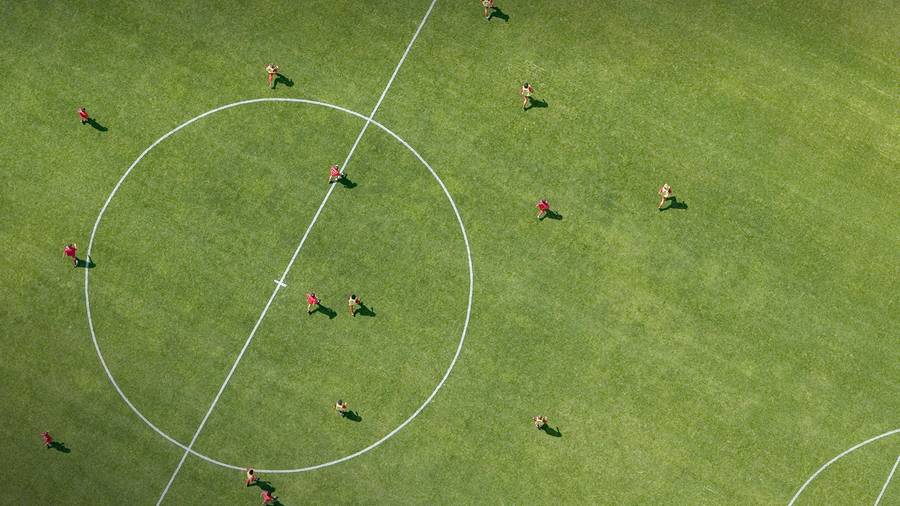The 21st century has seen the beginning of a ‘data revolution’ across the world. Several industries are capitalizing on new technologies and data collection methods as a means of improving efficiency and providing invaluable insights into performance and the footballing world is not exempt from this trend. It is clear that data collection and analytics now plays an essential role in football and its influence on strategy is continuing to grow. The phenomena isn’t limited to behind-the-scenes either; in fact the idea of collecting data, analysing it and using it to gain advantage over opponents or provide insights has been popularized across social media, fantasy football, betting industries and even sports films like ‘Moneyball’.
Clubs, managers, scouts, players, financial departments and physios all now routinely use statistics and data collection as a means to assess performance within their clubs. Significant amounts of time and money have been spent in developing teams of analysts to find value in players and methods where others can’t; it affects almost everything about the game we know today.
Nowhere is this more evident than in player recruitment. Smart scouting strategies often are the beginnings of successful seasons and the use of data and analytics is now integral to that process. The ability to identify a player’s skill and chances of contributing to the improvement of a team is a critical aspect of any scout’s job and that task is made much easier as a result of data collection. Statistics such as goals and assists may give a base understanding of a player’s ability in front of goal but as technology has developed and data collection improved, there is now a plethora of metrics from which to gain insight about every particular detail of a player’s performance.
More advanced cameras, hyper-sensitive tracking systems, offside line technology, heart-rate monitors have all undoubtedly helped coaches and managers assess how players are performing on the pitch and in training, but they have also led to the discovery of underlying characteristics of a player’s capabilities too. These new technologies unearthed new statistical insights such as expected goals, expected assists, shot creating actions, goal creating actions, overall threat, passes per defensive action, distance covered, and the list goes on. As a result, scouts now have more information available to them than ever before from which to make decisions in the transfer market. Not only does this help the process itself, but it increases the chances of clubs finding value in players that other competitors could not, and often for a lower price. The most recent example of a club that pioneered this strategy with resounding success is Leicester City.
In 2014/15 the Foxes were tipped as favourites for the drop and with only 10 games to go looked destined to fall through the Premier League trap door. A remarkable run of results in their last few games under the leadership of then manager Nigel Adkins saw them avoid that fate but that did not stop bookies and pundits alike from billing them as favourites for the drop once again in 2015/16. What followed was truly remarkable as Leicester shocked everyone and won their first ever Premier League crown. Many labelled the remarkable achievement a ‘fluke’ but without their excellent recruitment, it would not have been possible. Key players that were vital to the success of the side such as Leonardo Ulloa, Danny Drinkwater, Ngolo Kante, and Riyad Mahrez were all brought in for under £20 million collectively under a system that allowed the Foxes to acquire top class players and watch them fulfill their potential while at the club before selling them on for a much larger profit. The use of data and statistics in Leicester’s strategy allowed the club to go toe-to-toe with the so-called ‘big six’ and win out while on a significantly smaller budget.
As for on the pitch, data collection and technological advancements have helped officials with important decisions on the field. The use of the video assistant referee is a hotly contested debate that is still raging years after its introduction. Its effectiveness and application have been called into question on numerous occasions following some dubious assessments from match officials since its implementation. However, there is little doubt that the technology in theory at least provides referees with a far more thorough view of important incidents of the game and subsequently improves their chances of reaching the correct decision.
Whether that in itself is affecting the flow of the game and fans’ enjoyment of the matches is still up for debate but with the Premier League committed to its use and the technology still in its infancy, improvements are sure to be made over the coming years. One overwhelmingly successful venture though has been the introduction of goal-line technology. Hawkeye camera tracking and magnetic field tracking have both allowed referees to easily determine by technical means if the whole ball has crossed the line, by sending a signal back to them almost instantly. Before its introduction football fans had to stomach blatantly incorrect decisions such as Frank Lampard’s infamous disallowed goal against Germany in the 2010 World Cup but the development of this technology has put an end to unenviable situations such as that for good.
There have also been benefits from an entertainment standpoint. While the numerous statistics will of course help each and every fan create their best possible fantasy football team, the Sports betting industry in particular has grown alongside the increased use of data collection and analytics in football. As much as statistics offer insight for coaches, players and scouts to make use of, they also offer a wide variety of betting markets for punters to explore. New betting sites are still appearing online in the UK that are offering an incredibly detailed amount of data to their users. It not only offers more opportunity to have a flutter but the vast array of data out there also helps inform customers more before they put a bet down. This trend is now inseparable from the most crucial aspects of the game and technology is set to continue shifting at a rapid rate.
With the emergence of virtual reality and AI, it’s hard to say what the next big development in the way we enjoy the world’s most popular sport could be. It seems only a matter of time before something new comes along undoubtedly with its fair amount of controversy too. Nevertheless, with data and technology constantly improving, the next decade promises to be an exciting one for the footballing world.



















